When you’re shopping for intimate clothing, the texture and feel of the fabric matter more than anything else! Look beyond the soft, silky feel of the clothing as you browse through a shop and examine the labels inside the garments. You may be surprised to discover that one of the most popular materials used in underwear these days is something called modal. So, what is modal fabric?
Modal fabric is a light, silky material made out of synthesized beechwood pulp. This semi-synthetic fabric is very popular for use in underwear, athletic wear, and bedsheets. Modal fabric manufacturers promote the sustainability of this material, as it uses less water than cotton production and has a higher fiber yield per acre than most natural fabric.
In this article, you’ll learn all about where this fabric comes from and its pros and cons. You’ll also find out all the facts about the sustainability debate. Finally, you’ll get a clear picture of the many uses of this popular fabric!
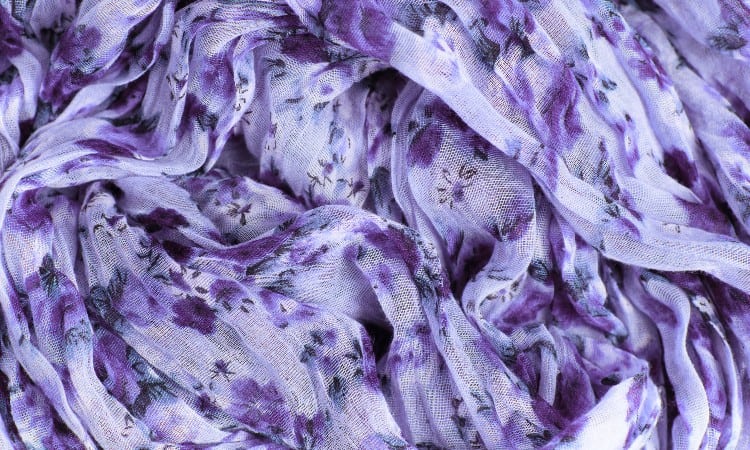
What is Modal Fabric?
 Modal is a semi-synthetic material made out of chemically altered beechwood pulp. Technically, it is a type of rayon, though it is a special version called high wet modulus rayon, or HWM. This type of rayon can absorb a great deal of moisture, gets stronger when wet, and does not stretch out of shape.
Modal is a semi-synthetic material made out of chemically altered beechwood pulp. Technically, it is a type of rayon, though it is a special version called high wet modulus rayon, or HWM. This type of rayon can absorb a great deal of moisture, gets stronger when wet, and does not stretch out of shape.
If you haven’t heard of this unique kind of cloth before, that’s probably because it’s a pretty new man-made fabric. It was first developed in Japan in the 1950s. It didn’t take off as quickly as the fully synthetic fabrics that got a strong foothold in the fashion industry during WWII, though.
Lenzing AG in Austria sold modal fibers as early as 1964. But it wasn’t until the late 70s that the plant-based textile started to feature in retail clothing.
This innovative cloth still doesn’t have the huge reach of polyester or nylon. But it is gaining popularity in the clothing industry. You might be surprised to discover how much of your clothes contain synthetic material!
Since this fabric does start its life as beech trees, you will see it called semi-synthetic or bio-based.
What makes it so unique? Textile scientists tailor synthetic fabrics to achieve special characteristics. Because of this, this cloth is designed to provide the ultimate softness.
It has a light, smooth, silky texture. You will often see it in high-end fashion and it does typically cost a bit more than regular cotton.
These days, there is a growing demand for Modal clothing, intimates, and bedding because of the high-quality nature of this new fabric.
How is Modal Fabric Made
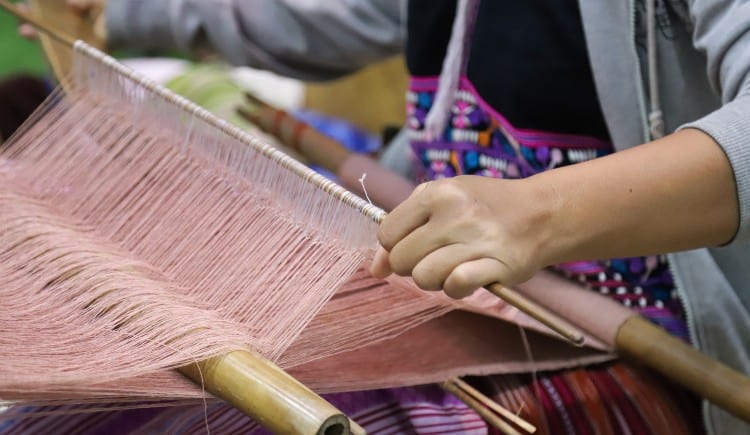
Modal fabric is made by harvesting cellulose from beech trees, turning the cellulose into a mash using a series of chemical rinses, and then using spinnerets to turn the product into fibers.
Are you ready for some science? Here’s a more in-depth look at the production process. This will help you understand what sets this fabric apart from natural and synthetic kinds of cloth.
As the first step of the production process, manufacturers process cellulose out of beech tree chips. This hardens into large sheets perfect for processing in vats of chemicals.
The cellulose sheets soak in a chemical preparation called sodium hydroxide. Viscose rayon also undergoes this production process but requires far more of the toxic chemicals. This turns the hardened cellulose into a mash.
The next step in the production process applies a rinse of another chemical called carbon disulfide. This creates a pulp called sodium cellulose xanthate. At this point, the actual chemical structure of the original beechwood changes.
This leads to the semi-synthetic nature of this cloth.
One last soak in sulfuric acid creates a substance that manufacturers can extrude into fibers or turn into yarn using spinnerets.
Though it begins life as a plant, modal does not have natural fibers. Its manufacturing process more closely resembles the process used to make polyester, a fully synthetic fabric.
Despite this, you will frequently see it termed a sustainable or environmentally friendly fabric. It earns this distinction because it uses less water and fewer chemicals than many other types of fabric manufacturing.
Today, China is the biggest manufacturer and exporter of modal fabric. Several other well-known companies around the world also focus on this kind of cloth, though. For example, an Austrian company called Lenzing AG makes Lenzing modal, which is especially well-known for its commitment to sustainable, eco-friendly cloth production.
Types of Modal Material
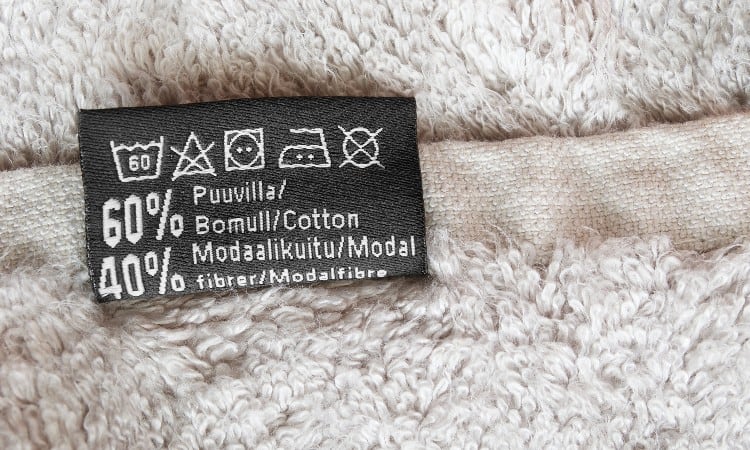
Today you can buy regular modal, micro modal, and a variety of modal blends. Manufacturers frequently blend several kinds of fibers to create a unique blended fabric that capitalizes on the best features of each type of cloth.
If you compare modal vs. micro modal, both materials go through the same manufacturing process, with one difference. Micro modal features even finer yarns in its weave and uses more threads per square inch. This creates a very lightweight cloth.
On its own, modal makes excellent intimate apparel and socks. Typically, though, manufacturers blend it with either cotton or spandex to create products like bedding and athletic wear.
Modal and cotton particularly blend very well together. Cotton provides additional breathability, while modal brings durability, higher absorption, and more softness to the mix. Modal also helps cotton avoid shrinkage during washing and drying.
Spandex or lycra and modal make a great stretchy blend perfect for running, yoga, or working out! This creates a silky smoothness you won’t find in most leggings or tank tops.
What Does Modal Fabric Feel Like?
Modal has a delightfully silky, super-soft feel. In texture, it feels quite similar to silk. You will usually find it featured in higher-end fashion because of its luxe qualities.
Have you ever put on a silk shirt or a silk dress? It slides over your skin so lightly that you hardly know it’s there. Every time you move, you can hear the almost-inaudible whisper of the silky fibers rustling against each other.
Best of all, whenever the fabric brushes your skin, you feel feathery softness instead of the crisp rasp of many woven cloths.
Is Modal Breathable?
Modal fabric is breathable and is often used in sportswear for this reason. It contains thousands of micropores, making it highly absorbent, meaning that it can soak up both water and sweat! Best of all, it has the moisture-wicking abilities of many synthetic fabrics that allow that moisture to quickly evaporate into the air.
All of that said, it does not look or feel like cotton, which has a loose over-under weave that promotes easy airflow. This cloth typically has a tighter texture. If you breathe on it, you won’t feel as much of your breath come out on the other side of the fabric as you would if you tried the same test with a piece of cotton.
Modal does quickly move both heat and moisture out into the air and away from your skin, though. Its micropores make it more breathable than a plastic-based fabric like polyester.
Is Modal Fabric Warm?
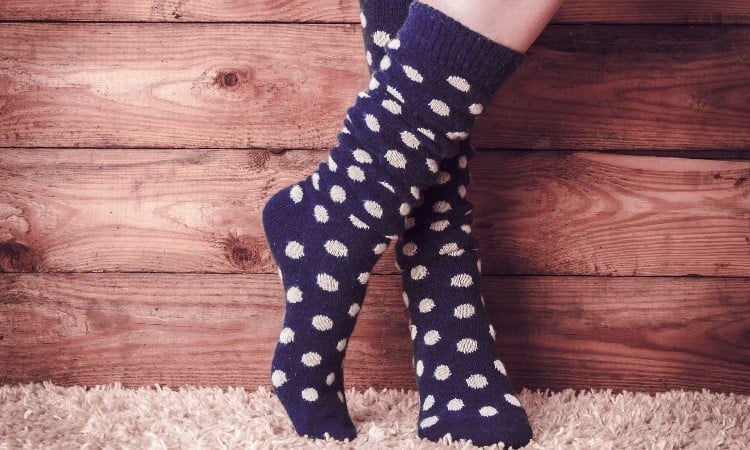
Modal fabric does not provide a lot of heat, but it does have thermo-regulating properties that make it a great base layer for workout gear, even during the winter.
Because it is so light and thin, the fabric on its own won’t keep you as cozy as flannel or a thick acrylic knit.
What this cloth does really well, though, is to conduct heat between your skin and the outside air, regulating your temperature. This makes it useful for athletic wear in both hot and cold weather!
Does Modal Shrink?
Modal has excellent resistance to shrinking or stretching. It is 50% less likely to shrink in the wash than cotton. It even shrinks far less than any other form of rayon!
You have probably experienced the unfortunate moment when you remove a favorite piece of clothing from the dryer, only to realize you’re holding a garment that shrank to a much smaller size! Even more commonly, you might find that a garment seems twisted or skewed because it stretched out during the washing process.
This won’t happen with Modal! Unlike many fabrics, it doesn’t stretch out while it is wet. Because of this, you can easily machine-wash this cloth. It can also endure high dryer heats without melting or shrinking, but manufacturers often recommend putting it on a tumble dry setting rather than the permanent press setting.
Is Modal Fabric Stretchy?
Modal fabric has natural flexibility that makes it ideal for t-shirts and undergarments. That said, it is not innately elasticky like spandex. Manufacturers often blend it with spandex or lycra to create super-stretchy items like leggings.
You will also find varying levels of stretchiness in this cloth since elasticity in the fabric also depends on how the fabric is cut out and the style of the garment. For example, any garment cut out on the bias will contain a lot more stretch than a garment cut out along the grainline of the fabric.
Does Modal Wrinkle?
Modal resists wrinkling, though you can safely steam it or iron it on a low steam setting to remove any wrinkles that emerge.
Depending on the cut and style of your garment, you may need to carefully fold it (recommended for knits) or hang it up after washing or ironing to avoid getting wrinkles.
In general, this cloth wrinkles a lot less than a natural kind of cloth-like linen but more than polyester.
Is Modal Fabric Sustainable?
Modal fabric can be manufactured in an eco-friendly and sustainable manner, but this depends on the manufacturing company’s production process. Some companies strive to create fabric through environmentally friendly practices, but other companies cut corners and value profit over eco-friendly production practices.
What is a Sustainable Fabric?
In general, three big issues play out when you consider what makes a fabric sustainable or not. First, you have to consider the amount of water used to grow and manufacture the material. Second, natural fabrics that come from plants like beech trees that use the land to grow and harvesting these plants can be harmful to the environment.
Finally, the processes used to manufacture many fabrics require toxic chemicals, so you also have to consider the amount of toxic waste created by manufacturing the material.
So how does modal fabric score based on these metrics? Some companies like Lenzing AG use much less water in their production process than most fully natural fabrics would require. Lenzing AG also harvests beech trees in a sustainable, eco-friendly way with a higher fiber yield per acre of land used than most natural fabrics while making Lenzing modal.
They still have to use chemicals like sodium hydroxide and carbon disulfide, but at least they use far less than is necessary for creating viscose rayon. The growing popularity of modal has pretty much overshadowed the use of viscose rayon because manufacturing viscose rayon is so much less eco-friendly.
Now, all of that sounds great, but it only works if ethical companies enforce environmentally friendly practices. Some companies wipe out swathes of rainforests to make this cloth! If you consider yourself an environmentally conscious consumer, you should research the companies you buy your clothes from.
Natural vs Synthetic Fabric
Another factor that impacts the sustainability of fabric is whether it is made of natural or synthetic fibers. As you probably remember, modal is a bio-based fabric made from cellulose harvested from beech trees, making it partially natural and partially synthetic. Usually, natural fibers do less harm because they require fewer toxic chemicals than synthetic fabrics to manufacture.
If you have sensitive skin or certain allergies, you may have issues wearing some synthetic fabrics because of the chemicals used during production.
Honestly, though, you can get into the weeds over this debate because both sides offer valid arguments. You will also see environmentalists argue that some natural fibers do more harm because they require so much water to grow!
The bottom line with a bio-based fabric like modal is that it is intended to do less environmental harm and use far less toxic chemicals than previous synthetic fabrics such as viscose rayon or polyester. It also uses less land and less water than many natural fabrics.
Pros and Cons of Modal Fabric
Now that you know a bit more about modal, where it comes from, and what makes it special, let’s sum up the pros and cons of this bio-based fabric. This kind of cloth is:
- Remarkably soft and drapes like silk.
- Breathable and does not stick to you or cling.
- Moisture-wicking and regulates your temperature.
- Absorbent and has thousands of micropores capable of soaking up lots of moisture
- Durable and resists wrinkling, staining, or stretching.
- Depending on how it is made, sustainable and far more eco-friendly than many other types of cloth.
- That said, it is not as breathable as some natural kinds of cloth.
- It also costs more than some other kinds of cloth, though it usually doesn’t cost as much as specialty fabrics like silk or Pima cotton.
- This fabric can cause allergic reactions because of the chemicals used to make it.
Modal vs Cotton and Rayon
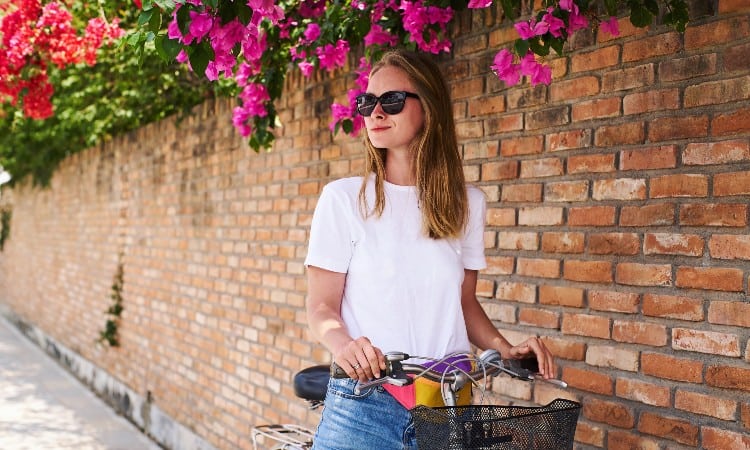
The biggest difference you will find between these kinds of cloth is that Modal is softer than cotton and more sustainable than viscose.
All three of these kinds of cloth make comfortable clothing like t-shirts, intimate apparel, socks, and athletic wear. They feel quite different from each other, though. For example, modal is softer, while cotton has greater breathability.
To get the best of both worlds, some brands now sell a blended cloth for clothing and household items like bedding that gives you both extra softness and extra breathability!
Technically, modal is a form of rayon. However, viscose rayon uses more chemicals in its production and has less flexibility and durability.
Another type of rayon often added to the discussion is lyocell. Lyocell is essentially the next generation of rayon. It is made using a special non-toxic chemical that makes it even more eco-friendly!
Popular Uses of Modal Fabric
Some of the most popular uses of modal fabric include bedding, towels, undergarments, socks, athletic wear, and pajamas. Big-name brands like Land’s End, Soma, and the Banana Republic sell affordable modal clothing options. You can also find a good variety of clothing and household items on Amazon.
Typically, you should expect to pay a bit more than you would for similar polyester or nylon products. For example, a modal blend t-shirt from the Gap might cost about $30 instead of the $10-$15 you might expect to pay for a polyester shirt.
The price difference also depends on brands and styles, though. The price gap isn’t always extreme, and you may find a set of modal sheets for only five dollars more than a set of cotton sheets.
Sheets
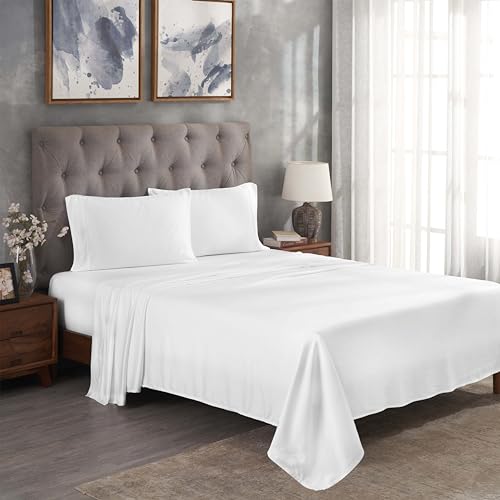 Modal sheets give you the soft, cloud-like softness of Egyptian cotton and the satiny smoothness of silk. They may not be quite as breathable as a loosely woven natural cloth, but they do offer excellent moisture-wicking for any night sweating, and they hold up well through lots of washing.
Modal sheets give you the soft, cloud-like softness of Egyptian cotton and the satiny smoothness of silk. They may not be quite as breathable as a loosely woven natural cloth, but they do offer excellent moisture-wicking for any night sweating, and they hold up well through lots of washing.
One of the great benefits of these bed sheets is that they don’t develop annoying little pills all over them as you use them!
The only downside of this luxe bedding is that it does cost a bit more, typically around the $50-$80 price range. Check out this gorgeous set of sheets to get an idea of all the benefits of luxury bedding!
Towels
 So far, modal hasn’t made big in-roads into the bath towel market.
So far, modal hasn’t made big in-roads into the bath towel market.
This is surprising, considering its excellent absorbency! That said, a few brands like Land’s End do offer towels made of blended fibers.
The great thing about these towels is that they are ultra-soft and silky.
Take a look at this set of fluffy, soft towels!
Underwear
 Modal originally gained traction in the fashion world as an excellent silk substitute for intimate apparel. If you can afford to pay just a smidge more for your intimate clothing, you will find yourself well-rewarded by the luxurious softness and silky but not clingy texture of this material. Because of its long, durable fibers, this fabric also holds up well for lots of washing, which is necessary for undergarments!
Modal originally gained traction in the fashion world as an excellent silk substitute for intimate apparel. If you can afford to pay just a smidge more for your intimate clothing, you will find yourself well-rewarded by the luxurious softness and silky but not clingy texture of this material. Because of its long, durable fibers, this fabric also holds up well for lots of washing, which is necessary for undergarments!
You will also find that this special cloth offers you comfortable breathability for sensitive areas and high moisture absorption for hot and sweaty days (no one wants to feel sweaty in some places!).
All of that goes to say that you can find very popular regular underwear made out of this fabric as well as high-end undergarments and even lingerie! This modal blend set will give you an idea of the comfort you can expect from this type of material!
Socks
 Modal socks give you a classy, professional look and pair perfectly with a business suit or a nice set of loafers. They have a silkier appearance than most socks. Many brands sell modal dress socks and leave the rugged footwear to other types of cloth.
Modal socks give you a classy, professional look and pair perfectly with a business suit or a nice set of loafers. They have a silkier appearance than most socks. Many brands sell modal dress socks and leave the rugged footwear to other types of cloth.
One of the advantages of this cloth for something you will wear and clean a lot like socks is that it won’t fade over time. It also won’t stretch out or pill.
Check out these comfy and cute patterned dress socks!
Athletic Wear
 Modal makes great athletic wear because of its moisture-wicking abilities. It will keep you cool while you run, stretch, or dance! You also won’t feel like you’re swimming in your sweat by the end of your workout with this absorbent fabric taking care of you.
Modal makes great athletic wear because of its moisture-wicking abilities. It will keep you cool while you run, stretch, or dance! You also won’t feel like you’re swimming in your sweat by the end of your workout with this absorbent fabric taking care of you.
On top of this, this material offers excellent flexibility that makes it perfect for high-energy activities. If you need even more stretch in your clothing, you can often find modal and spandex blends as well.
If you prefer a more rugged outer layer for an outdoor workout, you may want to consider using modal workout garments as a silky base layer. For example, take a look at this ultra-soft tank to get an idea of how comfortable this clothing is!
Pajamas
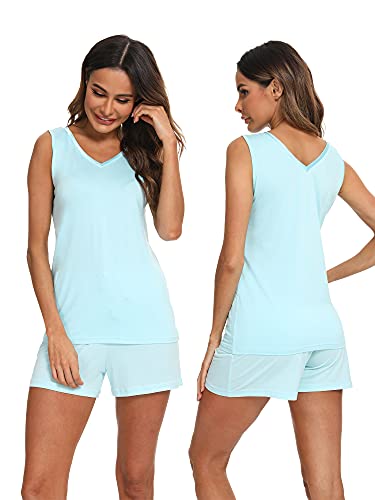 If you like to look elegant in your sleepwear, or if you like to lounge about the house in the ultimate comfort, try modal pajamas! You will feel like you can afford to buy actual silk sleepwear.
If you like to look elegant in your sleepwear, or if you like to lounge about the house in the ultimate comfort, try modal pajamas! You will feel like you can afford to buy actual silk sleepwear.
You may enjoy a satiny style of fashionably draped nighties perfectly suited to this silky cloth. Or you can also find a wide range of modal knit pajama sets to keep you cozy and cute.
Much like bedding, good sleepwear will suck away any unwanted moisture to keep you cool and dry as you sleep.
Check out this casual yet comfortable set of pajamas!
Is Modal Fabric Good for Kids?
Modal fabric offers kids extra softness and comfort in their clothing and bedding. This fabric also does better with sensitive skin than most synthetic fabric. It’s especially good for kids who suffer from dry skin because it will not catch and rub against the irritable areas!
Plus, in the United States, special laws protect children’s clothing to make it safe from hazards like causing choking or catching on fire. This is especially true for children’s sleepwear.
The extra expense of this special fabric may not fit your budget. But if you can afford it for your children, they will appreciate the little touch of luxury in their lives!
How to Care for Modal Fabric
Caring for modal is quite easy because you can machine wash and dry this material. You can use either warm or cool water and a regular warm dryer setting. You can wash your modal clothes as often as necessary and they should hold up quite well!
If possible, avoid using both chlorine bleach and the permanent press setting on your dryer.
To treat stains in modal clothes, test out a stain remover on an unobtrusive corner of the garment to ensure it does no harm. Or try a gentle paste of baking soda and water rubbed lightly over the stain. Then wash the garment as usual, but inspect it to see if the stain came out before throwing it in the dryer!
You can iron most modal garments by using a low heat setting and turning the garment inside out to iron on the wrong side of the fabric. This way you won’t scald a shiny patch into the front of your shirt!
Conclusion
If you didn’t know much about this innovative fabric, you should feel like an expert by now! You now know that modal is a bio-based material produced from the cellulose found in beechwood pulp.
You also know that this material has remarkable softness and silkiness. These qualities make it a popular choice for use in bedsheets, intimate apparel, and various other types of clothing.
You also got a chance to consider the question of sustainability. Modal tries hard to be more eco-friendly than many other types of fabric.
Have you ever bought a modal garment? Did you find it as soft as you expected? Leave a comment below to let us know!